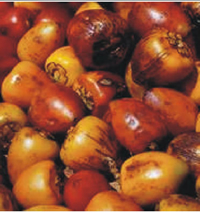miércoles, 30 de enero de 2013
Carnaval de Barranquilla
In our last newsletter we let you know about the most important fairs and festivals of Colombia. We are now a couple of weeks before the Carnaval de Barranquilla and we would like to emphasise about this cultural event which takes place between the 9th and 12th of February. This is certainly one of the most spectacular carnivals in South America. It represents with its parades the mestizo population and the fusion of cultures and races. It has been declared an UNESCO heritage. Being there you can enjoy an amazing musical mix of rhythms like Cumbias, Porros, Fandango and Mapalé. Barranquilla is located at the Caribbean Coast of Colombia, exactly between Cartagena and Santa Marta at the outfall of the Magdalena River. Visiting Barranquilla can be combined with trips along the coast’s highway “Troncal del Caribe” which connects more than 500km, from the department of Antioquia to La Guajira desert. Last year our colleague Natalia had a great time reporting the Carnivals most important highlights. She shared the following pics...
lunes, 28 de enero de 2013
Chontaduro – the fruit of the Bactris gasipaes palm
 Once again
a fruit that can be discovered in Colombia: Chontaduro, a fruit of a native
palm of the tropical forests of South and Central America. This fruit is most
commonly eaten in Cali and the Pacific Coast. Chontaduro was already cultivated
and consumed by the ancient tribes of the country because of its nutrition
properties. You can tell a Chontaduro fruit is mature and enjoyable to eat when
the skin looks red or between a combination of orange and yellow. Birds,
especially Parrots eat them gladly too. Chontaduro must be cooked for a long
period in order for us to eat them. It is common to see street kiosks offering
the fruit to be eaten with salt or honey. The taste? Well, the fruit is not
specially sweet but it’s really healthy so if you have the opportunity, try
Chontaduro it will not harm you!
Once again
a fruit that can be discovered in Colombia: Chontaduro, a fruit of a native
palm of the tropical forests of South and Central America. This fruit is most
commonly eaten in Cali and the Pacific Coast. Chontaduro was already cultivated
and consumed by the ancient tribes of the country because of its nutrition
properties. You can tell a Chontaduro fruit is mature and enjoyable to eat when
the skin looks red or between a combination of orange and yellow. Birds,
especially Parrots eat them gladly too. Chontaduro must be cooked for a long
period in order for us to eat them. It is common to see street kiosks offering
the fruit to be eaten with salt or honey. The taste? Well, the fruit is not
specially sweet but it’s really healthy so if you have the opportunity, try
Chontaduro it will not harm you!domingo, 27 de enero de 2013
Gold Museum in Bogotá
It is finally time to share
and comment about the gold museum experience in Bogotá. Our feedbacks inform us
that for most visitors, it is not only mandatory to include this visit in every
city tour but also for some, even the Highlight of the day! The gold museum is
only a couple of minutes away from the hotels in the old city (Casa Platypus,
Casa Deco, Hotel Muisca, Hotel de la Opera, Augusta, etc.) it is also easy to
arrive to the museum with the Transmilenio transport system (Station: Museo de
Oro).
The gold museum exhibits the
biggest pre-colombian collection of discovered gold pieces in the world until
our days. We should take between 1-2 hours to admire the about 25.000 gold
artifacts but most important, to interpret its significance.
The museum is distributed in four principal rooms that concern the following themes:
1. The making process of the gold
objects: the ancient societies of Colombia had amazing techniques for searching
and furthermore, working the metal. Gold would be in many cases melted and in
ceramic containers casted, the metal was also manipulated with other methods
such as hammering, other approaches will be explained by your guide.
2. The Gold artifacts from the
different regions of Colombia: from south to north we will be guided through
Colombia’s most important indian tribes: Nariño, Calima, San Agustin,
Tierradentro, Tolima, Quimabaya, Muisca, Zenu, Tayrona and some more.
3. We enter to an area that is
secured with a heavy and antique safe door. The guide shows us the objects that
the chieftain used to convert themselves in animals, to travel along time and
to communicate with the spirits of nature.
4. Offering: gold represented to
the indians a spiritual value rather than a material one. In Guatavita (70 km
away from Bogotá) for example, gold artifacts were thrown in the middle of a
lagoon as an offer to the sun. This ritual is directly connected with the
Dorado Legend.
In our opinion, the gold museum must be included in the program of every visit to Bogotá.









